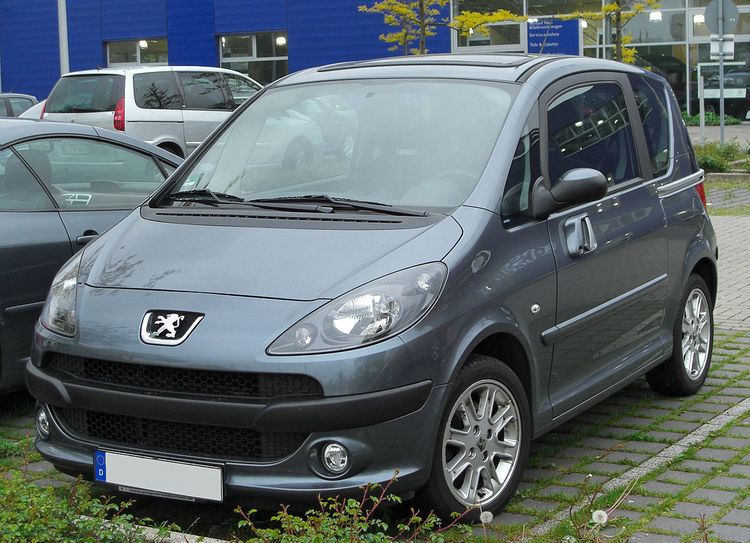Production 2005–2009 Class Mini MPV | ||
 | ||
Assembly Poissy (Poissy Plant), France | ||
The Peugeot 1007 was a Mini MPV produced by the French automobile manufacturer Peugeot from 2005 to 2009. It was based on the same platform as the Peugeot 206 and Citroën C3.
Contents
Design
The 1007's unique design featured four pillars, and two power sliding doors (similar to the Toyota Porte), rather than conventional hinged doors for easier access in cramped spaces and on hills. The car also featured user swappable Cameleo interior trim pieces.
Background
Another innovation (now discontinued) is the optional "2-Tronic" semi-automatic transmission, also used (under the name "Sensodrive") on the Citroën's C2, C3 and C3 Pluriel (though a similar system was used on the Hudson Commodore of the 1950s, albeit using a vacuum shift), which shares the 206's 1.4 L and 1.6 L petrol engines and 1.4 L and 1.6 L diesel engines.
For its size, the 1007 was expensive, with prices around €14,000 / £10,000. EuroNCAP awarded the vehicle its second best ever rating for adult occupant safety.
Features
The 1007 is the first mainstream car from Peugeot to feature a "double zero" number. In English speaking countries, the name was marketed with the pronunciation "ten oh seven".
Originally launched with the pronunciation, "one double oh seven", and James Bond style promotion, Peugeot revised their strategy, under pressure from the Bond franchise owners. It is also commonly called the "one thousand and seven". In France, it was marketed as the "mille-sept".
Discontinuation in Europe
The 1007 was dropped from Peugeot's United Kingdom model line up in 2008, although the car was still in production in mainland Europe until the end of 2009. The indirect successor is the Peugeot 2008.
